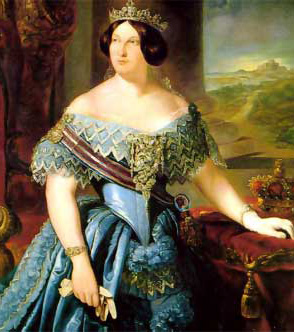
Second Carlist War

So it was a time for civil wars in Spain. Only 7 years ago the first Carlist war ended and there was still some division and controversy when it came to the succession to the throne.
While Isabella II was the official queen of Spain, still many proclaimed Don Carlos Maria Isidro as Carlos V. There was a plan to marry Carlos' son and Isabel, and there the conflict would end. This was approved of by some of the more moderate sections of Isabella II's supporters and by the Carlists.
Carlos V had "abdicated" in favour of his son Carlos VI, who "ascended to the throne" at 27. This was done so Carlos would be able to marry Isabella. However the government rejected him and instead supported the marriage of Isabella with her cousin Francisco, whose sexuality was largely questioned. Thus began a conspiracy for Carlos to ascend to power, repeating once more the intensive Spanish experience in war: the Second Carlist War.
The War of the Matiners or the Second Carlist War
In 1846, after hearing that the attempts end the old quarrel failed, the first uprisings of Carlists rebels began in Catalonia. They were not satisfied by the result of the First Carlist War and acted more like bandits.

Those who were unhappy about some of the measures that the government lead by Ramón María Narváez, such as consumption taxes and the industrial and agricultural crisis of 1846, specially strong in Catalonia contributed to the discontent and the number of dissidents grew enormously. Furthermore, Narvaez introduced a liberal property system that contradicted the old and traditional communal uses of land. He was highly unpopular and they saw in Carlos the chance of setting the old ways back.
The first Carlist bouts of rebellion began in Solsona in 1846, when several gang-like bands got together, never bigger than 500 men. They attacked mainly public servants and military groups, acting as guerrilla. These men would usually act in their local area, so they were well acquainted with the lands and surroundings.
One of the most important of the leaders of these groups was the priest Benet Tristany, who attacked Cervera to get his hands on money and ammunition. His uprising was shortlived and he was executed in May 1847. However the Carlist movement continued growing despite the government's attempt to reduce their numbers, the second Carlist war reached boiling point.
In 1849 Carlist groups appeared in Extremadura and Castille. In October the Carlist uprising attempts in Castille and Navarre failed, the Carlists in Catalonia received weapons from Belgium and continued with a guerrilla warfare.
In 1849 Carlos VI urged by general Cabrera attempts to return to Spain to raise the spirits of his troops, but he is arrested in France as he tried to cross the Spanish frontiers. He would later be forced to return to the UK.
In April of the same year, the liberal faction begins an aggressive campaign against Carlists in Catalonia. General Cabrera who commanded the Carlist troops was forced to cross the Catalan frontiers and was arrested in France, his troops are soon to follow his example and flee from Spain crossing the French borders. By May the war was over and the "Isabelina" troops entered Catalonia. Isabella II won round two – the Second Carlist War was over.
In June 1849 the government published a decree pardoning the carlists, near 1,500 of them return. Many others however decided to stay in France.
